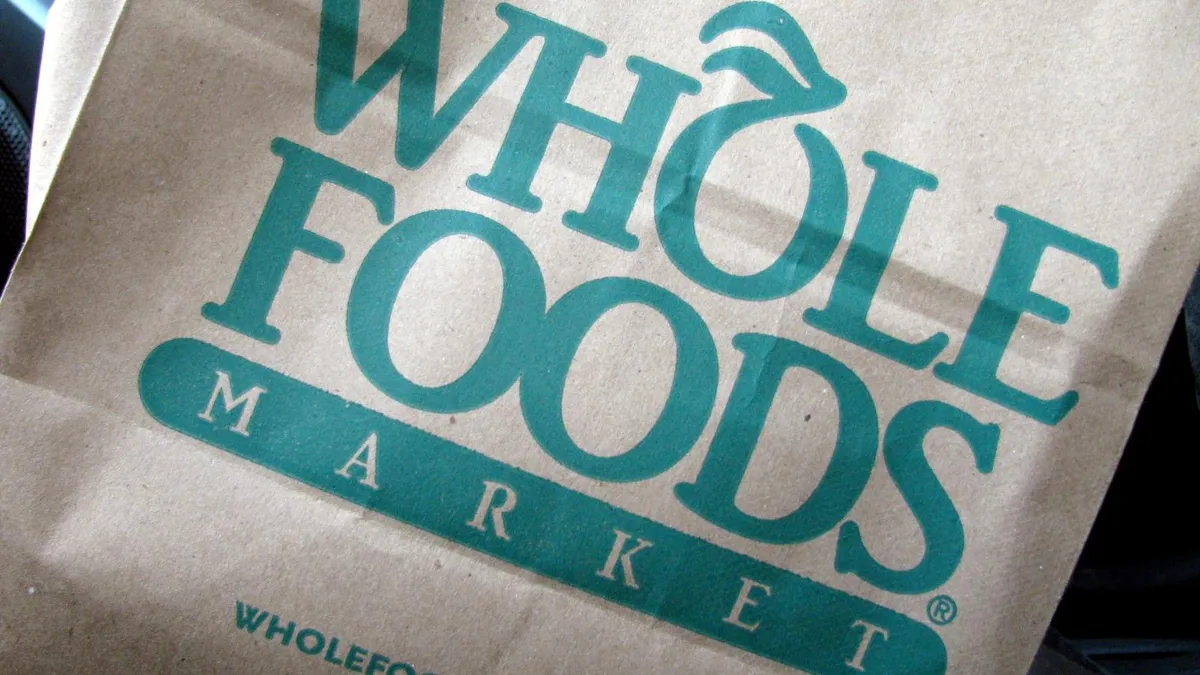Dive Brief:
- Whole Foods continued its string of sales declines, with comp store sales down 2.4% and revenue up just 1.9% to $4.9 billion for the first quarter of 2017, according to the company's earnings report released Wednesday night.
- The slide prompted the company to lower its earnings forecast for the year and to announce it would be accelerating the promotional and digital strategies it hopes will revitalize sales.
- “In this increasingly competitive marketplace, we are committed to taking every step necessary to improve comps and deliver higher returns for our shareholders,” said John Mackey, co-founder and chief executive officer of Whole Foods Market.
Dive Insight:
Investors weren’t expecting sales growth from Whole Foods this quarter. But they were hoping to see signs that the company’s cost savings, promotional and digital strategies were beginning to bear fruit.
These results won’t give them much confidence. Whole Foods’ same-store sales, a key metric, were down 2.4%, worse than the Wall Street forecast of 1.7% and only marginally better than the 2.6% slide the company saw in Q4 of last year. The natural and organic retailer failed to meet its own expectations, anticipating a drop of no more than 2%.
Revenue, meanwhile, was up only 1.9%, below the 2.5% to 4.5% growth Whole Foods has projected for the year.
As a result, the retailer lowered its projections for the year in line with these first-quarter results. It also announced that, for the first time since 2008, it’s reducing its store count in the coming quarter. The company will open six new stores while closing nine.
The results paint a worrying picture for 2017, and they will no doubt make investors question when and if Whole Foods’ new category management practices will gain traction. In November 2015, CEO John Mackey laid out a nine-point plan for growth that included targeted promotions and enhanced digital capabilities, including digital couponing and expanded delivery through partner Instacart. These efforts, which the company is banking on to turn around its fortunes, will now go into high gear.
Overall, Whole Foods is struggling to stand out in an industry where it’s no longer the only large-scale purveyor of natural and organic goods. With the likes of Costco and Kroger elbowing into this space, Whole Foods has doubled down on its image as a health destination, reflected in its slogan, “America’s Healthiest Grocery Store.”
Enhanced promotional strategies, including its first-ever television ads and mailers, signal the retailer has come down from its perch to play hardball with the rest of the industry. But are these efforts too little too late?










